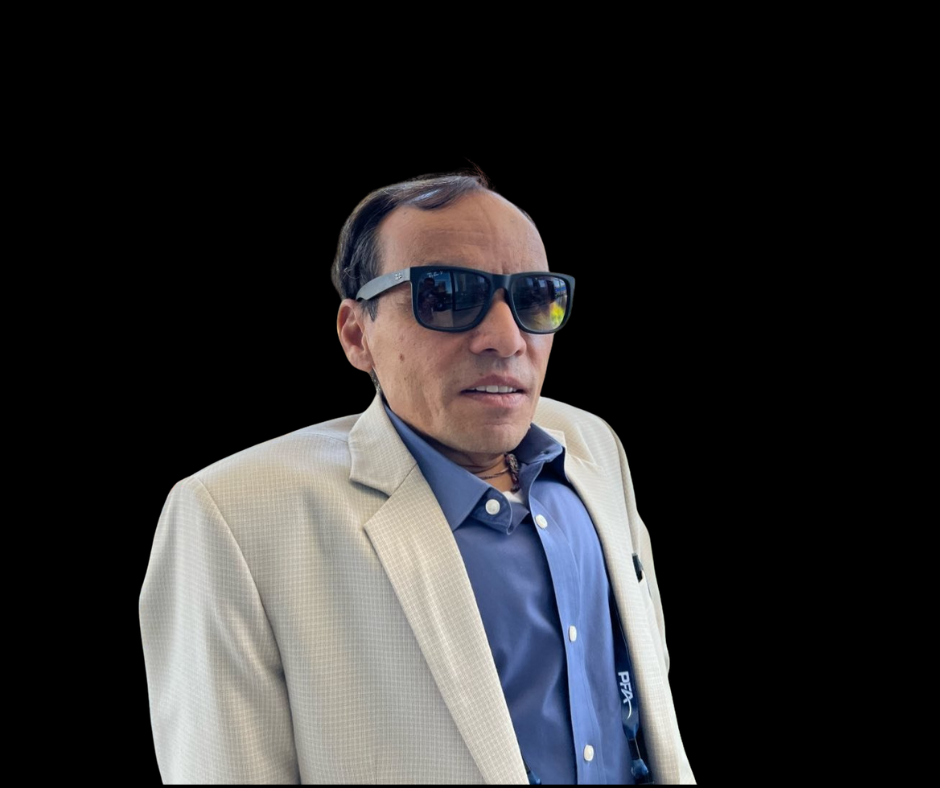Nestled amidst the breathtaking landscapes of Colorado and Denver, Gyanendra Gadal, born in 1959, stands as a beacon of lyrical brilliance and untiring social activism. His odyssey, starting in 1979, has transcended geographical boundaries, earning him international acclaim and solidifying his position as a revered figure within the Nepali diaspora.
Hailing from the picturesque Ilam district in eastern Nepal, Gadal’s literary journey began in 1979. His innate talent for crafting magical lyrics quickly captured hearts, leading to a mesmerizing recording in 1983 —– ““Hridaybhari Sajai Dinxu,”,” sung by Sambhu Rai and Champa Thuling, and released by Radio Nepal. This marked his triumphant entry into the world of songwriting, setting the stage for an illustrious career.
Gadal’s lyrical prowess truly flourished with his first blockbuster, “Din Dhalyo Andheri Raat Ma,” released in 1990. It dominated Radio Nepal’s charts for months, showcasing his versatility and captivating audiences across diverse platforms. He masterfully navigated between modern, folk, and national genres, proving his ability to connect with listeners on a deeper level.
Although his academic pursuits led him to Colorado, Denver, where he resides with his wife, Lata Gadal, and sons Sargam and Saral, Gadal never abandoned his artistic calling. He holds an MBA in Accounting and an MS in IT, demonstrating his well-rounded intellectual foundation.
Over the years, Gadal’s lyrical portfolio has expanded to encompass over 130 recorded songs, resonating deeply with audiences worldwide. His poems, gajals, and song creations not only showcase his artistic brilliance but also reflect a profound connection to the cultural and emotional essence of Nepal.
Since the early 2000s, Gadal has been a champion for the Nepali language and literature, actively engaging with prestigious organizations. His leadership roles in the Nepali Literature Society, Non-Resident Nepali Association (NRNA), Association of Nepali in America (ANMA), and others serve as a testament to his unwavering commitment to promoting Nepali culture and literature on a global scale.
His influence extends beyond his compositions. Several published books and academic theses, including ““Songwriting Journey of Gyanendra Gadal“” by Lochana Koirala (2023) and ““The Personality and Publication of Gyanendra Gadal“” by Samir Nepal (2016), delve into his lyrical journey, enriching the discourse on Nepali literature. He has also published song collections like ““Jharipachiko Aakash”“ (2013), ““Malai Chhune Maan“” (2003), and others.
Furthermore, Gadal’s involvement in journalism is reflected in his editorial contributions to literature journals like Talas Monthly Magazine (2005-2016) and Antardristi Quarterly Magazine (2004-2010). This multifaceted engagement highlights his dedication to nurturing the literary landscape.
His commitment to promoting literature globally is further underscored by his current organizational roles. As Chief Patron of the Immigrant Nepali Lyricist Association (since 2024), President of Writers International (since 2018), and Chairman of NRNA NCC USA’s Literature Promotion and Publicity Committee (since 2018), he continues to shape the literary narrative for future generations.
Gadal’s achievements have been recognized through numerous prestigious awards, including the Natikaji Memorial National Musical Honor (2021), the Chhinnalata Lyrics Award (2018), and the Saregama Sangeet Samman (2022). These accolades, along with the Nepal Academy Honor (2011), Aabhiyanshree Samman (2012), and Best Lyricist Award by Radio Nepal (1997), stand as testaments to his extraordinary contributions to the Nepali literary scene.
Beyond the awards and recognition, Gadal’s true legacy lies in his dedication to mentoring young literature figures. He inspires a new generation to embrace the richness of Nepali language and culture. His timeless compositions, like “Hridaybhari Sajai Dinxu” (1984), “Din Dhalyo Andheri Raat Ma” (1990), and “Samjhanaka Gahuharu“ (1985), continue to resonate with audiences, solidifying his position as a maestro of words and a cultural icon whose impact transcends borders and generations.


